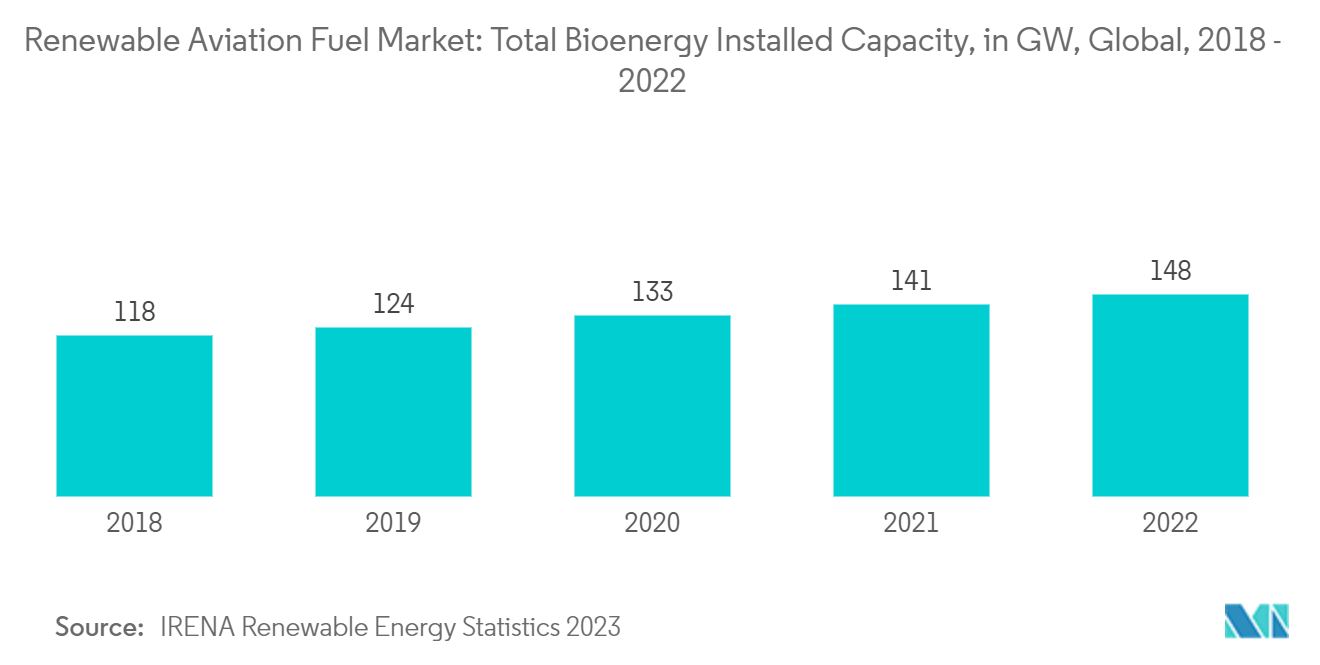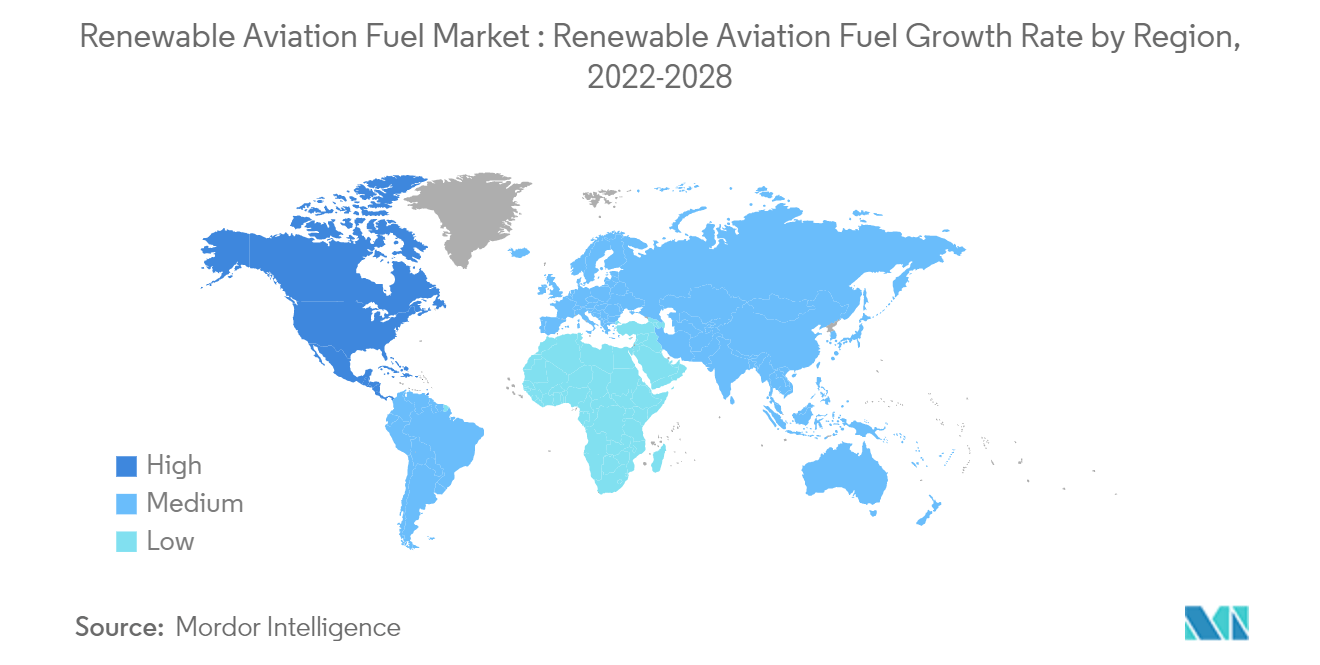Market Trends of Renewable Aviation Fuel Industry
Hydroprocessed Esters and Fatty Acids (HEFA) Technology to Dominate the Market
- Hydroprocessed Esters and Fatty Acids (HEFA), commonly known as Hydrogenated Vegetable Oil (HVO) or Hydroprocessed Renewable Jet (HRJ), is a type of hydrocarbon aviation fuel made from animal or vegetable oils (triglycerides) by hydroprocessing.
- In 2011, hydro-processed esters and fatty acids (HEFA) technology received certification from the American Society for Testing and Materials (ASTM) for bio-jet fuel production. HEFA uses oleo-chemical feedstock, such as oil and fats, for renewable fuel production.
- A significant share of available commercial volumes of bio-jet fuels comes from HEFA biojet, with several commercial-scale facilities worldwide producing the same. However, renewable diesel (HEFA-diesel) is also made during the process, with a larger market scope and a higher sales price. Thus, producers are focusing on HEFA-diesel instead of HEFA-jet.
- Moreover, hydrocarbon aviation fuel made from animal or vegetable oils comes under bioenergy. According to International Renewable Energy Agency, in 2022, the total global bioenergy capacity accounted for 148 GW, expected to grow due to its environment-friendly nature.
- In January 2022, Johnson Matthey launched an innovative technology, HyCOgenTM, by converting captured carbon dioxide (CO2) and green hydrogen into sustainable aviation fuel (SAF) using FT technology. Such developments in the renewable aviation fuel sector will likely increase demand for FT technology during the forecast period.
- Furthermore, in December 2021, the UK Department for Transport announced support of GBP 15 million to Advanced Biofuel Solutions (ABSL), which was likely to work on a detailed engineering design for a new facility in Cheshire. The plant will be used for gasification and Fischer-Tropsch (FT) technology to convert an estimated 133,000 metric tons of waste a year into a biocrude that can be upgraded to aviation fuel. Thus, such investments in upcoming sustainable aviation fuel projects will likely increase the demand for FT technology during the forecast period.
- However, HEFA biojet fuel costs more than fossil-derived jet fuels, and the potential feedstock for the HEFA is also costly. To decarbonize the aviation sector, companies such as Boeing are testing the technical suitability of high freezing point HEFA (HEFA+) aviation fuel in aircraft. HEFA+ is a synthetic hydrocarbon from bio feedstock, such as vegetable oil or waste fats.
- Therefore, owing to the above points, the HEFA segment is expected to dominate the renewable aviation fuel market during the forecast period.

North America to Dominate the Market
- North America is one of the largest markets for the aviation industry and renewable aviation fuel. Between 1978 and 2022, US airlines improved fuel efficiency by over 130%, which resulted in nearly 5 billion metric tons of carbon dioxide savings. According to the Airlines for America (A4A), the country's airlines operate approximately 28,000 flights daily in the pre-pandemic stage. Most airline companies in North America posted heavy financial losses in 2020 and 2021. However, airline traffic is expected to recover during the forecast period. Further, as crude oil prices are increasing rapidly, the demand for renewable aviation fuel is expected to grow during the forecast period.
- The Bio-Energy Technologies Office (BETO) of the United States and the Department of Energy (DOE), supported by Energy Efficiency and Renewable Energy (EERE), are making efforts to expand the adoption of sustainable, domestically produced alternative fuels for transportation and aviation to stimulate the growth of the renewable fuel industry.
- In North America, the primary policy incentive for renewable aviation fuel production is the US Renewable Fuel Standard (RFS), which credits refiners and fuel importers who blend renewable fuel into transportation fuel to meet Renewable Volume Obligation standards.
- In January 2022, the Environmental Protection Agency (EPA) issued proposed volume requirements, under the RFS program, for cellulosic biofuel, advanced biofuel, and total renewable fuel. Under this proposal, the renewable fuel standard 2022 was set at 36 billion gallons, an increment of over 3 billion gallons over the previous year.
- Moreover, The Departments of Transportation, Energy, and Agriculture developed a road map to guide their efforts to boost this fuel supply. The White House issued a "Grand Challenge" to expand sustainable jet fuel production to 3 billion gallons per year by 2030 to reduce aviation greenhouse gas emissions. It aims to create enough fuel by 2050 to meet 100% commercial jet fuel consumption. In March 2023, the U.S. government revised thr goals by funding USD 34.5 million as an opportunity to improve the science and infrastructure for converting waste into biofuels and help support the 2050 goal.
- The existing framework of fuel policies in North America is expected to support hydro-processed esters and fatty acids (HEFA) fuel production in the future, thereby increasing the opportunities for HEFA fuel producers in the region.
- Therefore, such factors are expected to boost the dominance of North America in the market during the forecast period.


